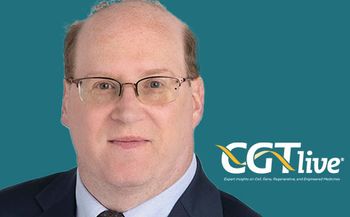
After Exa-Cel: Exploring the Next Wave of CRISPR Gene Editing Strategies
The approval of exa-cel, the first gene editing therapy, may herald a new era in developing gene editing strategies.
In December 2023, the FDA approved Vertex Pharmaceuticals' and CRISPR Therapeutics’ autologous gene-edited cell therapy exagamglogene autotemcel (exa-cel), marketed under the name Casgevy, for the treatment of severe sickle cell disease (SCD) in patients aged 12 years and older with recurrent vaso-occlusive crises.1 The approval came a few weeks after the United Kingdom’s Medicines and Healthcare products Regulatory Agency’s November 2023 approval.2
“We are extremely excited about the FDA approval for the first-in-human CRISPR/cas9 gene edited cells for individuals with SCD. It is a long time coming. It has been an extremely big privilege for me to be involved in that trial from the beginning, from around 4.5-to-5 years ago infusing the first patient to seeing it approved today is a huge milestone, not only for the individuals with SCD, but also for the field of gene editing. This is the first gene editing product that will be approved to be given to humans. And I'm hoping that that will open the door for this to be used more widely in other disease conditions in the future,” Haydar Frangoul, MD, medical director, Pediatric Hematology/Oncology, Sarah Cannon Research Institute, and Pediatric Transplant and Cellular Therapy Program, TriStar Centennial, told CGTLive™. Frangoul served as a principal investigator on the phase 1/2/3 CLIMB-121 clinical trial (NCT03745287) that provided the basis for exa-cel’s approval.
First Approval for Gene Editing
In addition to being the first gene therapy for treating SCD approved worldwide, followed shortly after with bluebird bio’s FDA approval of lovotibeglogene autotemcel (lovo-cel), marketed as Lyfgenia, on the same day as exa-cel’s United States (US) approval, the approval marks a first for a CRISPR-based, gene-editing therapy worldwide.1 The move may herald the start of a new, gene-editing era for genetic diseases and possibly even other, broader, applications.
"[The] FDA approval of Casgevy for severe SCD marks a seminal moment in the history of biotechnology and human health,” Tim Hunt, JD, the CEO of the Alliance for Regenerative Medicine, told CGTLive™. “As the first gene-editing medicine approved in the US, Casgevy represents a durable and potentially curative treatment option for a population that has been overlooked for far too long—and one that is the largest to date for a gene therapy. Importantly, [this] milestone will also pave the way for a coming wave of next-generation gene-editing treatments for a range of diseases, from other rare disorders to cancers.”
Exa-cel’s approval is the first step on a path of developing gene-editing treatments, the pipeline of which has continued to evolve with newer applications of the technology. While exa-cel consists of ex-vivo, CRISPR/cas9 edited autologous hematopoietic stem cells, other avenues of investigation include in-vivo gene editing which could, among other advantages, eliminate the need for myeloablative conditioning, which may lead to secondary blood disorders or reduced fertility, or newer evolutions of CRISPR editing, including base editing and prime editing (FIGURE).
“To be able to imagine the use of genetic approaches for treatment of blood disorders… I think many have hoped that this is where we were going. I don't know that everyone thought that we would have gotten there so quickly with CRISPR. But having said that, the results are impressive,”
-Alexis Thompson, MD, MPH, chief of hematology, Children’s Hospital of Philadelphia
Evolution of CRISPR Gene Editing
Intellia Therapeutics holds the title of the first in vivo CRISPR candidate to enter late-stage clinical development with its NTLA-2001 CRISPR-based therapy for patients with transthyretin (ATTR) amyloidosis with cardiomyopathy. The company is on track to initiate the MAGNITUDE pivotal Phase 3 trial after receiving investigational new drug (IND) clearance by the FDA in October 2023.3
Two successive milestones in CRISPR gene editing, first, base editing, and then prime editing, have come out of the lab of David Liu, PhD, at the Broad Institute of Harvard and MIT. Both methods avoid the double strand DNA breaks that older CRISPR technology relies on, and research with prime editing has continued to improve on the precision and flexibility of CRISPR gene editing.4
Base editing is set to come to the US clinical stage for the first time after another October IND clearance by the FDA of Verve Therapeutics’ CRISPR base-editing therapy VERVE-101,intended to treat heterozygous familial hypercholesterolemia.5 VERVE-101 is currently being evaluated in the ongoing phase 1b heart-1 clinical trial (NCT05398029) in New Zealand. Data presented at the
A current frontrunner in the preclinical arena of investigating prime editing is Prime Medicine, cofounded by Liu and the pioneer of prime editing from his lab, Andrew Anzalone, MD, PhD, although there are numerous ongoing research programs investigating prime editing for a variety of disease types.
“I think prime editing has been a wonderful advance for the field. Other gene editing technologies, including Cas9 nuclease, may create a double-strand break, which can lead to potential off-target risks or imprecise edits. Prime editing does not create a double-strand break, and it's very precise. As a tool, it can be used to very elegantly repair any mutation in the genome. Certainly, with this program, we see very high correction—over 90% across multiple stem cell donors—and we see no off-target edits and no unintended edits at the target site. For us, this is a great demonstration of how you can use prime editing to very precisely correct a mutation with high specificity. I think prime editing will be able to be applied across multiple diseases in the future,” Jennifer Gori, PhD, vice president of research, Prime Medicine, told CGTLive while discussing
The data, presented at
The data were later followed up with the first-ever data of prime editing in nonhuman primates (NHPs), from an in vivo program targeting glycogen storage disease 1b, at the European Society of Gene and Cell Therapy (ESGCT) 2023 Congress in Brussels, Belgium.8 The data showed up to 50% whole liver and up to 83% of liver hepatocytes precise editing of p.L348 mutations in NHPs at day 14 without significant on-target unintended edits. The research also demonstrated the redose-ability of the lipid nanoparticle delivery method as well as no detectable off-target edits.
“[We are working to] target more difficult mutations or situations where there's a lot of heterogeneity in mutations in a gene that causes the disease… I think prime editing has a lot of opportunities. I think it can be applied more broadly, even beyond inherited disease to things like cancer,” Gori said.
Gene Editing in 2024
It remains to be seen what new research advances 2024 holds for gene editing, but the future seems bright coming off of a year of unprecedented research and developments. Taking a peek outside of CRISPR, base, and prime editing, research continues in the race to develop numerous other genetic editing strategies. These include Precision Biosciences’ ARCUS gene editing platform that uses the I-CreI endonuclease, and Tune Therapeutics and Omega Therapeutics’ epigenomic approaches to treating genetic diseases.
Also on the horizon, following up its approval for patients with SCD, is exa-cel's Prescription Drug User Fee Act date for patients with transfusion-dependent β-thalassemia, set for March 30, 2024. The therapy recently demonstrated a 91.4% transfusion independence rate for 12 continuous months (95% CI [76.9-98.2]; P <.0001) which has lasted for a mean of 22.5 months (range, 13.3-45.1) in the CLIMB THAL 111 trial (NCT03655678).9
REFERENCES
1. FDA Approves First Gene Therapies to Treat Patients with Sickle Cell Disease. News release. FDA. December 7, 2023. Accessed December 7, 2023. https://www.fda.gov/news-events/press-announcements/fda-approves-first-gene-therapies-treat-patients-sickle-cell-disease
2. MHRA authorises world-first gene therapy that aims to cure sickle-cell disease and transfusion-dependent β-thalassemia. News release. MHRA. November 16, 2023. Accessed November 16, 2023. https://www.gov.uk/government/news/mhra-authorises-world-first-gene-therapy-that-aims-to-cure-sickle-cell-disease-and-transfusion-dependent-thalassemia
3.Intellia Therapeutics announces FDA clearance of Investigational New Drug (IND) application to initiate a pivotal phase 3 trial of NTLA-2001 for the treatment of Transthyretin (ATTR) Amyloidosis with cardiomyopathy. News release. Intellia Therapeutics. October 18, 2023. https://ir.intelliatx.com/news-releases/news-release-details/intellia-therapeutics-announces-fda-clearance-investigational-0
4. Anzalone, A.V., Randolph, P.B., Davis, J.R. et al. Search-and-replace genome editing without double-strand breaks or donor DNA. Nature 576, 149–157 (2019). https://doi.org/10.1038/s41586-019-1711-4
5. Verve Therapeutics announces clearance of investigational new drug application by the U.S. FDA for VERVE-101 in patients with heterozygous familial hypercholesterolemia. News release. October 23, 2023. Accessed October 23, 2023. https://ir.vervetx.com/news-releases/news-release-details/verve-therapeutics-announces-clearance-investigational-new-drug
6. Vafai SB, Gladding PA, Scott R, et al. Safety and pharmacodynamic effects of VERVE-101 an investigational DNA Base editing medicine designed to durably inactivate the PCSK9 gene and lower LDL cholesterol – interim results of the phase 1b heart-1 trial. Presented at: AHA Scientific Sessions 2023; November 10-13; Philadelphia, Pennsylvania.
7. Gori JL, Heath JM, Tedeschi JG, et al. Prime editing of human CD34+ long-term hematopoietic stem cells precisely corrects the causative mutation of p47phox chronic granulomatous disease and restores NADPH oxidase activity in myeloid progeny. Presented at: American Society of Gene and Cell Therapy (ASGCT) 2023 Annual Meeting. May 16-20, 2023; Los Angeles, CA. Abstract #101.
8. Prime Medicine presents first-ever prime editing data in non-human primates demonstrating highly efficient ability of prime editors to precisely correct disease-causing mutation of gsd1b. News release. Prime Medicine. October 27, 2023. https://investors.primemedicine.com/news-releases/news-release-details/prime-medicine-presents-first-ever-prime-editing-data-non-human
9. Locatelli F, Lang P, Wall D, et al. Exagamglogene autotemcel for transfusion-dependent β-thalassemia. Presented at: 2023 ASH Annual Meeting & Exposition, December 9-12; San Diego, California. Abstract #1053
Newsletter
Stay at the forefront of cutting-edge science with CGT—your direct line to expert insights, breakthrough data, and real-time coverage of the latest advancements in cell and gene therapy.

















































